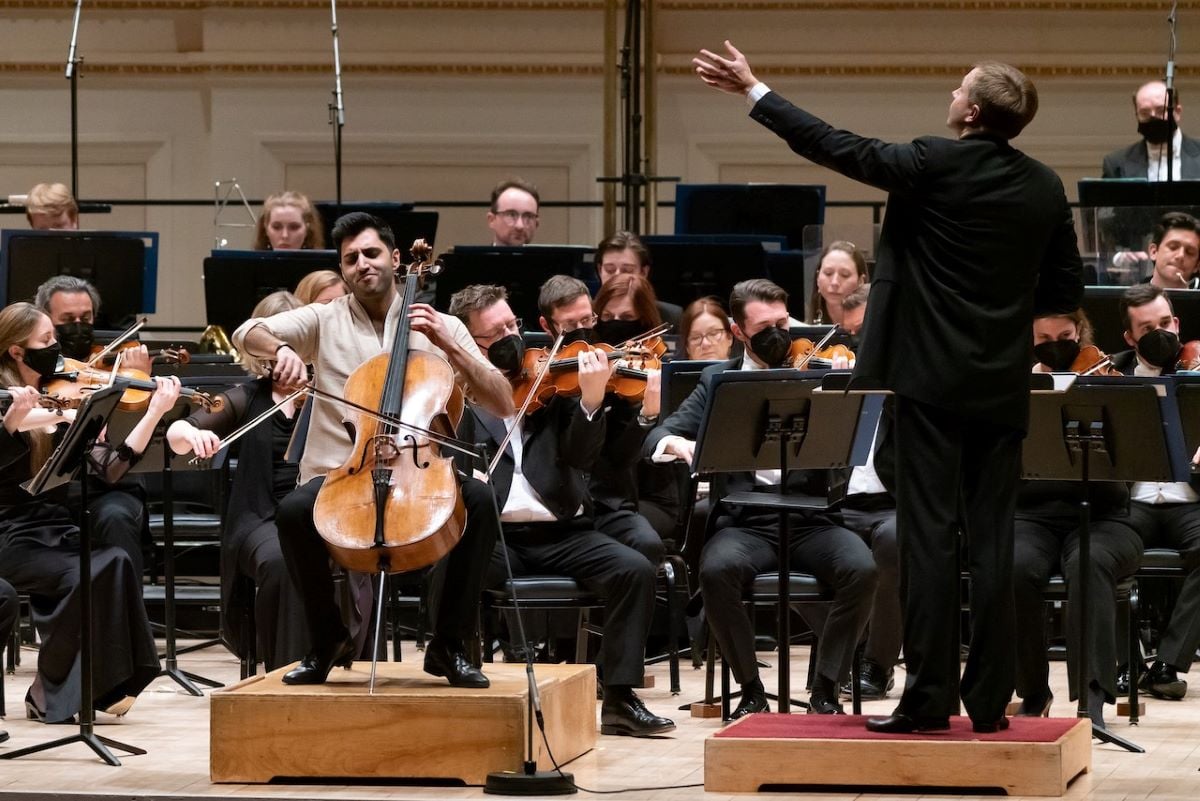
The Royal Philharmonic Orchestra generates 20% of its annual turnover from international work
Photo: Steven Pisano/Creative Commons
NPO revenue from international activity halves
Arts Council England study finds international environment has become "increasingly complex" for English cultural organisations and practitioners to navigate.
Income generated by National Portfolio Organisations (NPOs) from international activity has dropped by nearly 60% since 2014/15, a study commissioned by Arts Council England (ACE) has found.
The study's report from BOP Consulting found NPOs generated an estimated £53.8m from international activity in 2014/15. This fell to £41.5m in 2018/19 and declined further to £22.4m by 2021/22, a drop of 58% over a seven-year period that encompassed Brexit and Covid.
The report states that while the pandemic contributed to a decline in both the international activity of NPOs and revenues from it, the slowdown had started before the outbreak.
READ MORE:
- Closures and cutbacks as National Portfolio 2018-23 concludes
- NPO decisions: Enlarged portfolio shifts funding away from London
The study also found evidence of a range of beneficial outcomes arising from participation in international activity – such as touring, residencies, digital showcasing or the provision of goods – for both organisations and practitioners.
These include artistic development, increased technical skills and knowledge, increased quality and diversity of creative outputs, stronger connections, larger professional networks and career opportunities.
"International activity can also lead to economic outcomes, such as inward investment in England’s creative sector," the report adds.
"Over the long-term, international cultural exchange makes England a more attractive place to visit, to collaborate with and to do business with."
'Increasingly complex'
However, the report found the current environment for cultural organisations and practitioners is "increasingly complex to navigate".
"The Covid-19 pandemic, new relationships with the European Union and ambitions for Net Zero are all changing the ways the culture sector in England approaches and understands international cultural activity," the report states.
But the report also found the European Union remains the most significant region for the international activity of English arts organisations and practitioners post-Brexit.
Overall nearly three quarters of reported international revenues were generated from EU countries and North America. But the report warns opportunities to partner with the EU and conduct work in North America "may be decreasing".
"Qualitative data points to decreasing levels of funding available to support collaboration opportunities in these two regions following the UK’s exit from Creative Europe and the increasing complexity of North American funding requirements," the report states.
It adds that future access to public funding supporting international activity is "becoming an increasing concern for NPOs". According to one interviewee, "the competition [for funding] is increasing and, in the next five years, we've got really challenging times ahead".
 Photo: Unlimited/Silvia Machado
Photo: Unlimited/Silvia Machado
Funding sources for NPOs' international activity undertaken between 2018/19 and 2021/22 include the British Council, the Moondance Foundation and Unlimited, a commissioning body that supports, funds and promotes new work by disabled artists for UK and international audiences.
The report says that, through a project commissioned by Unlimited in 2018, national portfolio organisation Paraorchestra and Friends undertook international collaborations, allowing it to advocate for disabled artists on a larger scale, while also providing impactful opportunities for disabled musicians to showcase their talents.
Fewer physical projects
The study, which looked at 312 NPOs and 548 grant recipients, collected data relating to the 2018/19 and 2021/22 financial years. It compared this with a previous study that collected data for 2014/15.
The average number of physical projects undertaken by NPOs – weighted to take into account an increase in overall numbers of NPOs in 2018/19 – fell from 5.3 in 2014/15 to 4.3 in 2018/19. It then fell again to 1.8 projects per NPO in 2021/22.
Larger NPOs – those with a £2m-plus turnover – were involved with an average of 14.5 international projects each in 2014/15. But by 2018/19, this figure had dropped to 7.4.
The total number of projects reported by survey respondents who received Developing Your Creative Practice or National Lottery Project Grants was 559 in 2018/19 and 358 in 2021/22.
Grant recipients undertook fewer projects on average than NPOs, with an average of one project per respondent in 2018/19 and just 0.7 projects per respondent in 2021/22
Virtual activity
Although physical activity declined following the onset of the pandemic, the number of online projects reported more than trebled between 2018/19 and 2021/22.
The total number of virtual projects reported across all respondents (NPOs and grant recipients) rose from 328 in 2018/19 to 1,191 in 2021/22.
The increase in virtual activity brings the total number of reported projects (physical and virtual) in 2021/22 to 2,080 – just 60 fewer projects than the total number of physical and virtual projects reported in 2018/19.
However, the report said that the drop in total revenue as a result of international activity suggests that the virtual activities do not have the same revenue generating potential as physical activity.
Join the Discussion
You must be logged in to post a comment.